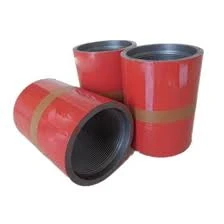- Afrikaans
- Albanian
- Amharic
- Arabic
- Armenian
- Azerbaijani
- Basque
- Belarusian
- Bengali
- Bosnian
- Bulgarian
- Catalan
- Cebuano
- Corsican
- Croatian
- Czech
- Danish
- Dutch
- English
- Esperanto
- Estonian
- Finnish
- French
- Frisian
- Galician
- Georgian
- German
- Greek
- Gujarati
- Haitian Creole
- hausa
- hawaiian
- Hebrew
- Hindi
- Miao
- Hungarian
- Icelandic
- igbo
- Indonesian
- irish
- Italian
- Japanese
- Javanese
- Kannada
- kazakh
- Khmer
- Rwandese
- Korean
- Kurdish
- Kyrgyz
- Lao
- Latin
- Latvian
- Lithuanian
- Luxembourgish
- Macedonian
- Malgashi
- Malay
- Malayalam
- Maltese
- Maori
- Marathi
- Mongolian
- Myanmar
- Nepali
- Norwegian
- Norwegian
- Occitan
- Pashto
- Persian
- Polish
- Portuguese
- Punjabi
- Romanian
- Russian
- Samoan
- Scottish Gaelic
- Serbian
- Sesotho
- Shona
- Sindhi
- Sinhala
- Slovak
- Slovenian
- Somali
- Spanish
- Sundanese
- Swahili
- Swedish
- Tagalog
- Tajik
- Tamil
- Tatar
- Telugu
- Thai
- Turkish
- Turkmen
- Ukrainian
- Urdu
- Uighur
- Uzbek
- Vietnamese
- Welsh
- Bantu
- Yiddish
- Yoruba
- Zulu
Crossover Drilling Tool - Innovative Solutions for Efficient Drilling Operations
The Importance of Crossover Drilling Tools in Modern Exploration
Crossover drilling tools play a vital role in the oil and gas industry, particularly in the realm of exploration and production. These innovative tools are designed to facilitate the efficient transition between different drilling programs, allowing operators to switch between various drilling techniques without the need for extensive modifications. The versatility and adaptability of crossover tools make them indispensable in today’s competitive energy market.
One of the primary advantages of crossover drilling tools is their ability to enhance operational efficiency. Traditionally, transitioning from one type of drilling to another could result in significant downtime, which in turn leads to increased costs and delayed project timelines. Crossover tools minimize these interruptions by enabling seamless integration of different drilling methods, such as rotary and directional drilling. This adaptability allows companies to optimize drilling strategies based on the specific geological conditions they encounter, ultimately leading to more successful drilling campaigns.
Another significant benefit of crossover drilling tools is their contribution to safety. In the oil and gas industry, safety is paramount; therefore, reducing the number of equipment changes and minimizing the complexity of drilling operations inherently lowers the risk of accidents. Crossover tools are designed with safety features that ensure stable and secure connections, providing operators with confidence as they navigate challenging drilling environments. Moreover, the use of these tools can help mitigate issues such as wellbore instability, enhancing overall drilling safety and integrity.
crossover drilling tool

In addition to improving efficiency and safety, crossover drilling tools are also a key factor in cost reduction. By enabling operators to utilize the most appropriate drilling methods for a given situation, these tools help minimize waste and optimize resource use. The ability to quickly switch between drilling techniques can significantly decrease operational costs, particularly in projects where multiple formations must be penetrated. This cost-effectiveness contributes to a more sustainable approach to resource extraction, aligning with the industry's increasing emphasis on environmental stewardship and responsible drilling practices.
Moreover, the advancements in crossover tool technology continue to evolve, with ongoing research and development leading to even more innovative solutions. Enhanced materials, improved designs, and smarter integration of digital technologies are all making crossover tools more effective than ever. The incorporation of real-time data analytics and monitoring systems allows operators to make informed decisions on the fly, improving drilling performance and ensuring that projects adhere to budgetary constraints.
In conclusion, crossover drilling tools are an essential component of modern drilling operations in the oil and gas sector. Their ability to enhance efficiency, improve safety, and reduce costs make them a critical asset for exploration and production companies. As the industry continues to face challenges such as fluctuating market demands and operational hurdles, the role of crossover tools will undoubtedly grow in importance, driving innovation and progress in drilling practices. The future of drilling will heavily rely on the adaptability and technological advancements provided by crossover tools, ultimately shaping the way operators explore and extract valuable resources from the earth.
-
Tubing Pup Joints: Essential Components for Oil and Gas OperationsNewsJul.10,2025
-
Pup Joints: Essential Components for Reliable Drilling OperationsNewsJul.10,2025
-
Pipe Couplings: Connecting Your World EfficientlyNewsJul.10,2025
-
Mastering Oilfield Operations with Quality Tubing and CasingNewsJul.10,2025
-
High-Quality Casing Couplings for Every NeedNewsJul.10,2025
-
Boost Your Drilling Efficiency with Premium Crossover Tools & Seating NipplesNewsJul.10,2025







